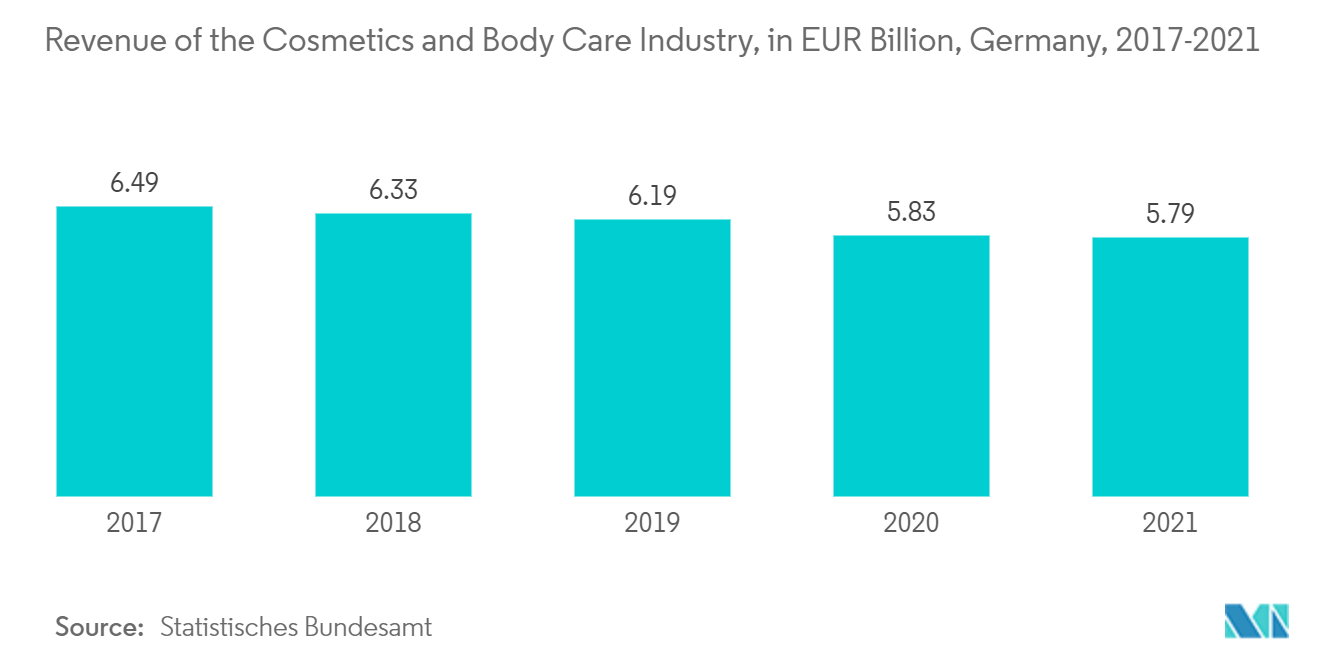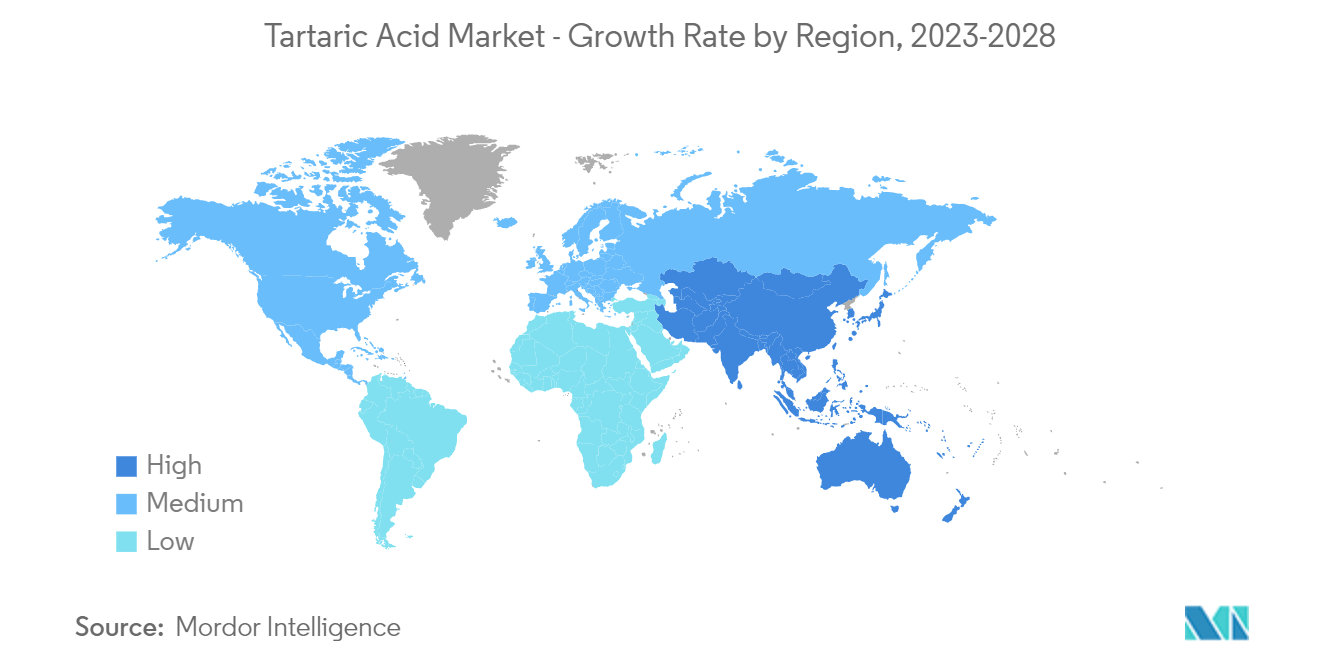Market Trends of Tartaric Acid Industry
Increasing Demand from the Cosmetics Industry
- Cosmetics and personal care products include a variety of body care, as well as hair care products. Shampoos, hair conditioners, body washes, soaps, and other skincare products, occupy a significant share of the segment.
- Tartaric acid and its salts are used as pH adjusters in cosmetics and personal care products. It is considered a low-risk and safe-to-use ingredient for skincare. It is also used as an antioxidant in the production of cosmetics.
- The personal care segment accounts for the third-largest consumption share in end-user industries. Globally, this segment is growing at a moderate rate.
- An increasing consciousness catalyzed the male grooming products market growth among male consumers of personal wellness and appearance. Owing to this factor, key players are focusing on launching new and innovative products for men to increase their product offerings and customer base. It may give them an edge over their competitors.
- According to Cosmetic Europe, the personal care association, the cosmetics and personal care industry brings at least EUR 29 billion (USD 34 billion) in added value to the European economy annually. Germany is one of the biggest cosmetics markets in Europe. In 2021, the German body care and cosmetics industry generated almost EUR 790 million (USD 920 million) in revenue.
- The Asia-Pacific region accounts for over 40% of the global beauty and personal care marketplace. The production reached very high levels, thus becoming a central hub for exporting cosmetics and personal care products to developed nations, such as the United States, Canada, and Austria.
- China is the world's second-largest cosmetics market and emerging as the largest market in cosmetics and skin care products globally. The Chinese cosmetics and skin care market, which includes various industries such as makeup, skincare, hair care, and personal hygiene, experienced growth in 2021-2022. Furthermore, the continuous population growth is another factor fueling the demand for cosmetics products in the country. It, in turn, is augmenting the growth of the market studied.
- In 2022, the retail sales value of cosmetic products reached CNY 393.6 billion (USD 61 billion). As the demand for cosmetic products expands further in second-and third-tier cities of China, cosmetics retail is expected to maintain its growth momentum in the coming years.
- The tartaric acid market will likely grow during the forecast period due to all the factors above.

Asia-Pacific Region to Dominate the Market
- Asia-Pacific region accounted for the largest share of the tartaric acid market. Tartaric acid consumption in foods and beverages in developing markets is expected to grow, along with the increasing demand for processed food and beverages.
- The demand for tartaric acid in the region is growing significantly due to the presence of the largest consuming countries, such as China and India. The surging application of tartaric acid in the pharmaceutical industry is also one of the key factors driving the market growth.
- India holds a significant position in the global pharmaceuticals sector. India is the largest producer of generic drugs in the world. The Indian pharmaceutical industry caters to more than 50% of the global demand for various vaccines, 40% of generic medicine in the United States, and 25% of all medicines in the United Kingdom.
- Furthermore, the pharmaceutical industry in Japan is one of the largest in the world, surpassed only by the United States and China. The total production value of medical drugs in Japan amounted to approximately JPY 9.2 trillion (USD 87 billion) in 2021, a decrease from around JPY 9.3 trillion (USD 88 billion) in the previous year.
- The Asia-Pacific region includes a share of nearly 40% in the global cosmetics and growing with the increase in the awareness of personal care in the emerging economies, making it the largest market in the cosmetics and personal care industries. Cosmetics consumption is increasing among Indian teens and middle-aged people, primarily driven by an increasing focus on self-care.
- The cosmetics and personal care industry is one of India's fastest-growing consumer product markets, with a strong market entry potential for US companies. The country's personal care and cosmetics sector grew strongly, increasing shelf space in retail stores and boutiques.
- In India, the export value of cosmetics, soap, toiletries, and essential oils amounted to nearly USD 2.9 billion in 2022. It was a significant increase compared to the previous fiscal year.
- All these factors are expected to increase the market for tartaric acid in the region during the forecast period.


